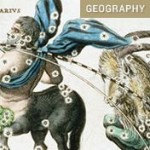By Mark Jenkins
Back before science ruined everything with its explanations, there were marvels. They were the natural world’s mysterious workings, signs and wonders: some delightful, some terrible, always awesome. The 19th century was the heyday of hard travel to distant places in search of knowledge and astonishment; consequent travelogues were thick on the ground, the writing particularly descriptive and fruity, the pages rich with aquatints, mezzotints, and chromolithographs. Jenkins, a historian at the National Geographic Society, has assembled a dramatic selection of material, words and period artwork from this Age of Marvels, knitting them together in an unobtrusive, informative narrative framework. There are choice snippets from the likes of Melville, Poe, and Conrad, but pride of place goes to explorers, both sung — such as Mungo Park, Mary Kingsley, John Wesley Powell — and unsung: John Van Dyke, perhaps, or Rosita Forbes, or Henry Tomlinson, who journeyed to “utterly back of even the Brazilian beyond.” They returned with treasure for the armchair traveler: tales of the waterspout’s twisted malevolence, the liquid radiance of the ocean’s phosphorescence, the inky rush of a squall line. There were deserts — “where everything was tuned to the key of flame” — and the haunted woods of the Balkans. There were armies of six-foot-long electric eels riding Venezuelan floodwaters, pink icebergs in the deep blue sea, fata morgana and St. Elmo’s fire, mountains so high “the floating Moone would shipwracke there, and sinke.” Leave it to Mark Twain to administer the sleeve across the windpipe of rapturous prose, espying from Mont Blanc’s summit “the Ghauts of Jubbelpore and the Aiguilles des Alleghenies.” But still, how would you like your aurora borealis, as charged solar particles stimulating the magnetic field, or “an atmosphere of pale, ghastly green, through which shown the unspeakable glories of two mighty crimson and yellow arches”? Choose your marvel.
(from the Barnes & Noble Review)
